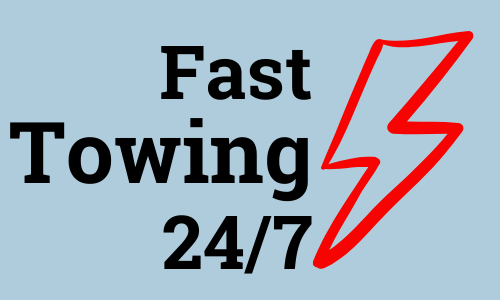Maintenance tips: How to prevent wear and tear on your truck’s engine
Often, it starts small — perhaps it’s an unfamiliar vibration or a bit of sluggishness when accelerating, or maybe you’ve got a gut feeling that something’s just not right as you’re rolling along the highway on the way to your next stop.
For truck drivers and fleet managers, catching these early signs of engine wear and tear can mean the difference between safely delivering your load and being stranded (along with that all-important cargo) on the side of the road.
Let’s face it: Wear and tear on an engine is inevitable over time, but with proper upkeep and preventive maintenance you can keep your engine operating smoothly for longer.
Recently we had a chance to visit with Dr. Jason R. Brown, global technology manager for heavy-duty diesel engine oils at Shell, about the various types of engine wear and tear — and how to prevent them.
“When we talk about wear and tear for a heavy-duty engine, or any engine, we tend to mean the things that are detrimental to the performance level we’ve come to expect from that piece of finely tuned equipment,” Brown said.
According to Brown, there are four types of engine wear — adhesive, abrasive, corrosive and fatigue. He explains the definitions and causes of each below.
Adhesive wear
When metal engine parts begin to touch without a good lubricant between them, the metals literally start rubbing together, forming microscopic rough spots — the technical term is “asperities,” according to Brown — on the metal surfaces.
Even though the metal looks and feels perfectly smooth, these tiny asperities create additional friction as the surfaces rub together, creating additional heat. Once the parts stop rubbing together, the heat can fuse the asperities together.
“Adhesive wear is literally where you’ve stopped the engine and allowed these asperities to weld together,” Brown said. “Then you start the engine again. And you literally break off those asperities between the metal parts.”
Abrasive wear
Abrasive wear is exactly what the name implies: Two surfaces are scratching against each other. This can be caused by a number of factors, including adhesive wear.
Abrasive wear can also occur when metal surfaces have a deposit buildup that’s started to scrape into the metal of the other surface. That scraping breaks off microscopic bits of the surface material — and those tiny bits worsen the problem as they move between the metal parts and wear away both surfaces.
A third cause of abrasive wear is using an oil that’s too thin. Lower-viscosity lubricants can allow the engine parts to rub together, while thicker oil can help keep them separated.
Corrosive wear
“When you burn fuel, the typical outcome of that combustion event is carbonaceous CO2, which we tend to think is bad,” Brown said. “But it also creates water.”
When you see drops of water coming out of a tailpipe, it’s actually condensation from your engine combustion. Not all of the water exits through the tailpipe: Some of it is passed to the rings around your piston and then goes down into the oil. Over time, this can cause the oil itself to break down.
Also keep in mind that, when an engine is running, it’s burning hydrocarbons — which in turn produce organic acids. Even the air has nitrogen and sulfur compounds that can also react with the small amount of oil in the piston to produce more acids.
“All these acids find their way into the engine oil, where they can dissolve the metal. They literally eat away at the metal surface,” Brown said, adding that high-quality engine oils, such as Shell Rotella’s range, help protect engines from corrosive wear by neutralizing or stopping the production of these types of acids.
Fatigue wear
When metal is heated, it results in thermal expansion; then, as the metal cools, it contracts. Over time, as that metal expands and contracts, it’s possible for a small opening to form — a crack, for instance. Engine deposits can now seep into that opening, resulting in the part expanding and contracting at a different rate than the rest of the metal. This can actually force the metal to crack.
Think of a cold climate where there’s a lot of snow in the winter. During the day, some of the snow melts and flows into small cracks in the road. Then, when the temperature drops again at night, it freezes — and water expands when it freezes. As the freezing water expands, it puts pressure against the pavement, cracking it further.
“That same kind of phenomenon can happen in the engine. And yes, over time, those cracks can cause pieces of the metal to break off,” Brown said.
How can you prevent engine wear?
Internal combustion engines have lots of moving metal parts that constantly slide and touch each other. The space between the surfaces of these parts is extremely small — but it’s enough space to allow a thin coat of lubricant. Adding lubricant allows the parts to move properly, but without actually touching.
As your engine ages and wears, those tight tolerances begin to loosen, creating more space and making it harder for the oil to seal the various areas of moving parts in the engine.
“Ultimately, all wear and tear can lead to complete loss of engine performance. But along the way, it’s loss of power efficiency and loss of fuel efficiency that you also face,” Brown said.
Linda Garner-Bunch has been with The Trucker since 2020, picking up the reins as managing editor in 2022. Linda has nearly 40 years of experience in the publishing industry, covering topics from the trucking and automotive industry to employment, real estate, home decor, crafts, cooking, weddings, high school sports — you name it, she’s written about it. She is also an experienced photographer, designer and copy editor who has a heartfelt love for the trucking industry, from the driver’s seat to the C-suite.
